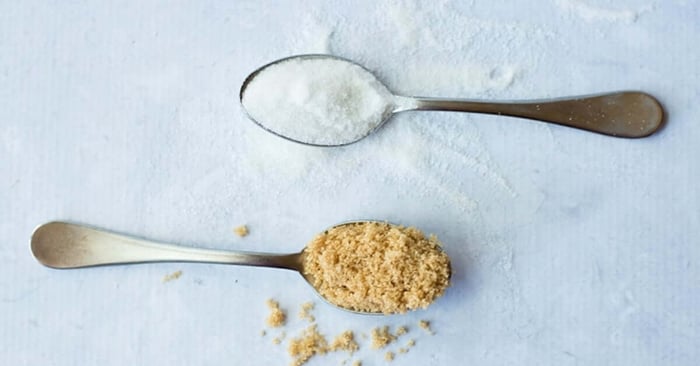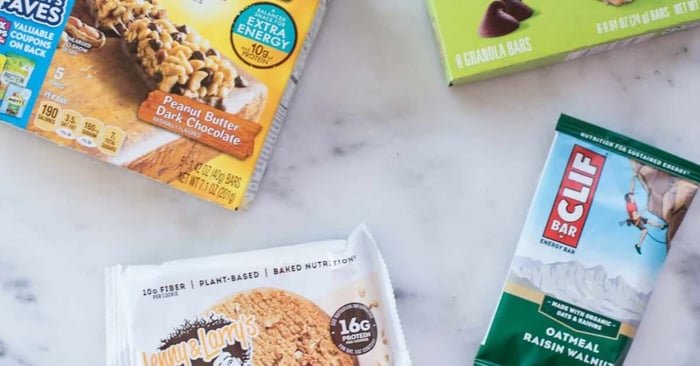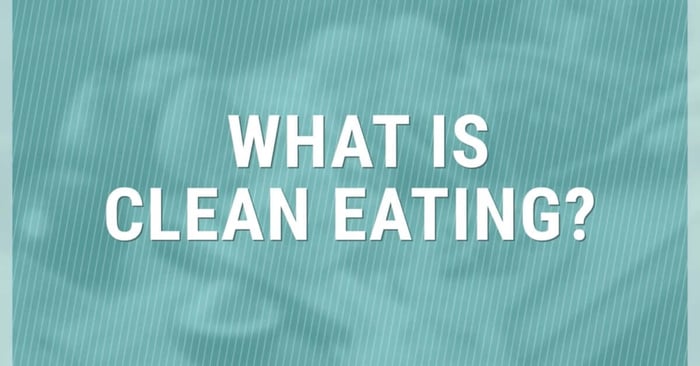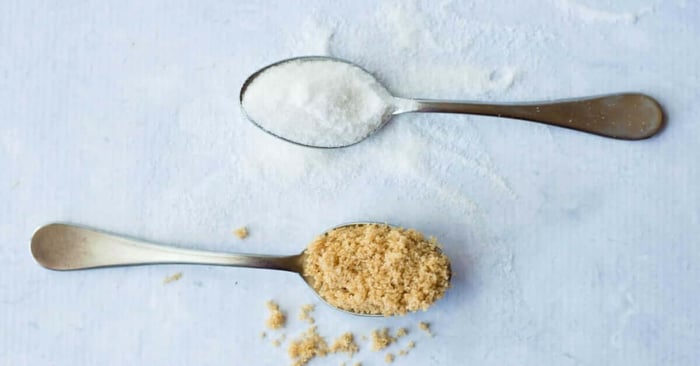Check out this article to discover the 7 steps I used to break free from sugar and How To Quit Sugar, too!
If you found this helpful, then chances are you will find these helpful as well: Eating Clean For Beginners, 7 Healthy Sugar Substitutes, and 6 Ways To Spot Hidden Sugars.
In This Post You'll Find:
Nowadays, it feels like manufactures put sugar in pretty much everything they can because, as consumers, we have developed an insatiable need for more and more sugar to make our taste buds happy. This isn't really news to you, I'm guessing. This is also why I lean towards Clean Eating.
If you found this post on How To Quit Sugar helpful, try checking out my post on 7 Healthy Sugar Substitutes.
But, just how bad is sugar, really?
Like is it necessary for me to learn how to quit sugar?
Well, research shows that refined sugar is associated with weight gain, diabetes, heart disease, osteoporosis, and depression, among others. <--- NONE of those are good things.
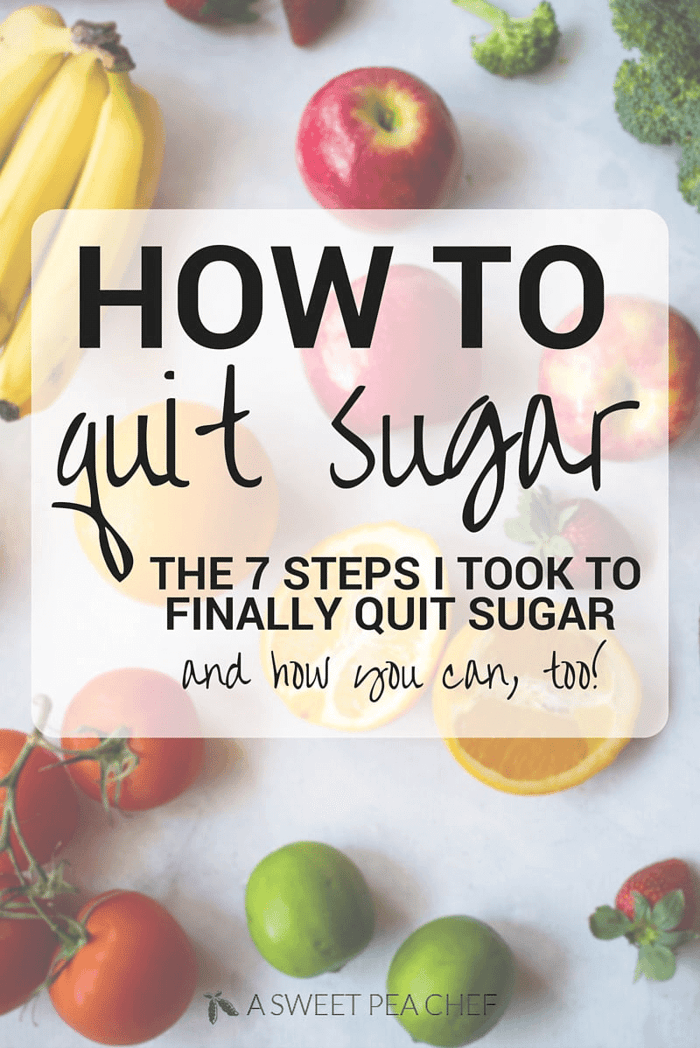
But, let’s clear one thing up: It’s actually not SUGAR, by itself, that is the main problem here.
Stay with me, here...
I propose we need to rethink how we approach our viewpoint on sugar.
Just like the demonized calories and carbs, for help on how to eat clean check out my Eating Clean For Beginners, sugar gets a bad wrap that is not necessarily deserving. “Real” sugar -- the kind that exists in natural foods, like fruits, vegetables, and milk, to name a few -- actually satisfies a legitimate nutritional and functional purpose in our bodies. Yep: sugar is something that exists in natural, whole foods and it provides our bodies with energy. Energy is good, in this sense.
Wanna see how I omit refined sugars and processed ingredients, reduce inflammation, and still love the food I eat? Check out my 30 Day Healthy program and read about my Weight Loss Struggle.
What’s NOT good is that us sweet tooth freaks have (myself totally included), over time, developed a certain need for sweeter and sweeter things. Couple that with becoming addicted to sweet stuff and you got yourself a gold mine, if you're a manufacturer selling sweet foods.
This has led to processing sugar (i.e. high fructose corn syrup, granulated sugar, brown sugar, and so on) into what we now have in most of the packaged foods out there.
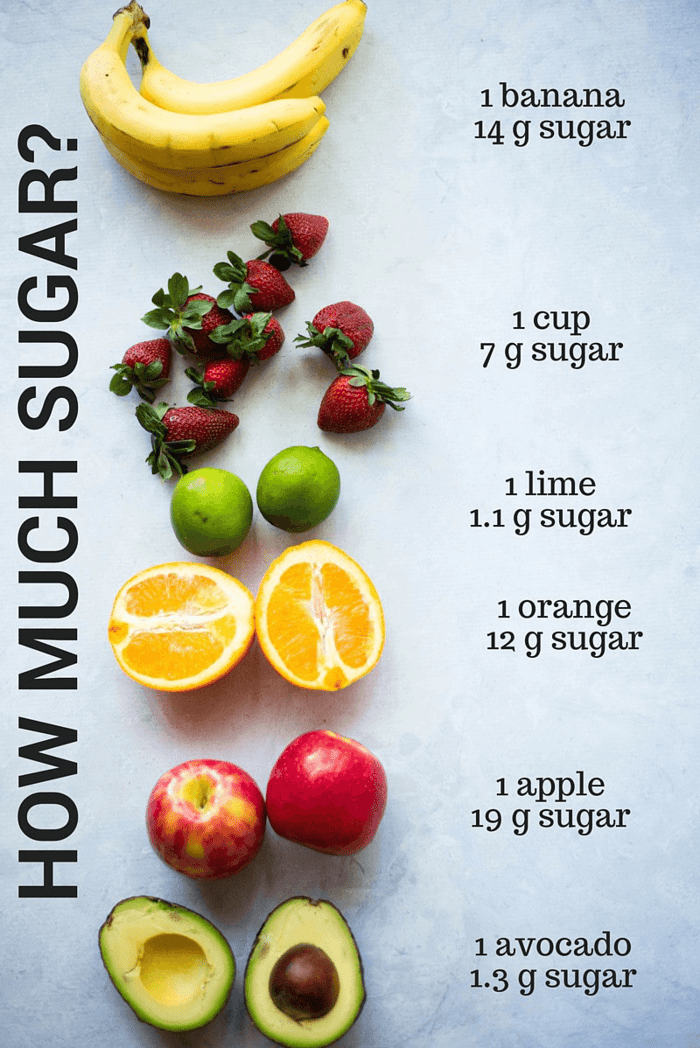
These highly (highly highly highly x10,000) refined forms of sugar are no longer taken from a fruit or a bean or a vegetable. When we consume those real foods, the naturally occurring sugar enters our bloodstream slowly as we digest the food and all the other nutrients provided by those foods. This is what we WANT. Learning what foods are good and what ones are bad for you is really helpful when you start learning how to quit sugar.

Refined sugars, on the other hand, don’t work in our bodies in the same way. They are pure energy from the very start - no need to digest and process the fibrous tissue of an apple to get your naturally occurring sugar.
Over time, this will put such a toll on our bodies and our organs will start to fail (i.e. Diabetes, heart disease, etc.).
So, how can we quit PROCESSED sugar, then? The good news is you can totally do this. I did, and thousands of others have in my 30-Day Healthy program.
And it's as glorious as it sounds. BUT, there are some steps I recommend you take to be successful. Let me share the 7 steps I took for how to quit sugar and work towards a refined sugar free life and how you can, too!
Step 1: Read your nutrition labels.
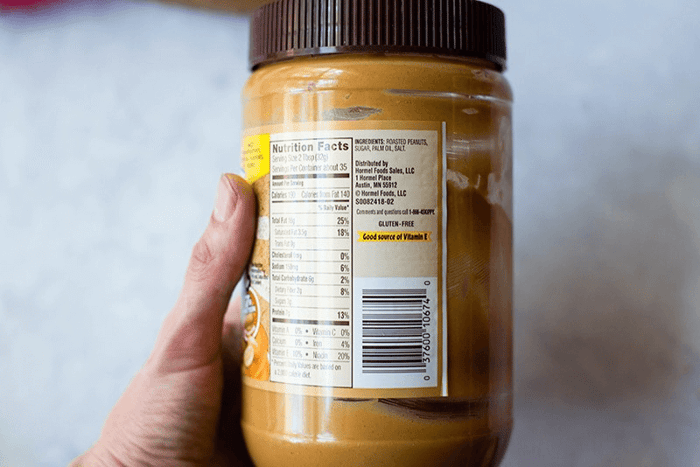
This is possibly the most important thing you can do to take charge of what foods you’re putting into your body. For any drink, cereal, package, energy bar, or whatever prepared food you purchase at the grocery store, read the label. What is this going to tell you? Everything!
Most of us, after reading the label and seeing high fructose corn syrup as one of the top 5 ingredients in the list would realize that food probably isn’t a good choice. But, what if you saw brown sugar, fruit juice, malt syrup, or organic cane juice? Would you stop and think this is just as bad?
Because, despite how much nicer they may sound, they’re still forms of refined sugar.
Another very easy way to spot sugar in the nutrition labels is by recognizing the “-ose” suffix. So, when you see words that end in -ose, like sucrose, maltose, dextrose, fructose, glucose, galactose, high fructose corn syrup, etc., there's a good chance it is sugar.
Step 2: Choose healthier, more real sources of sugar.
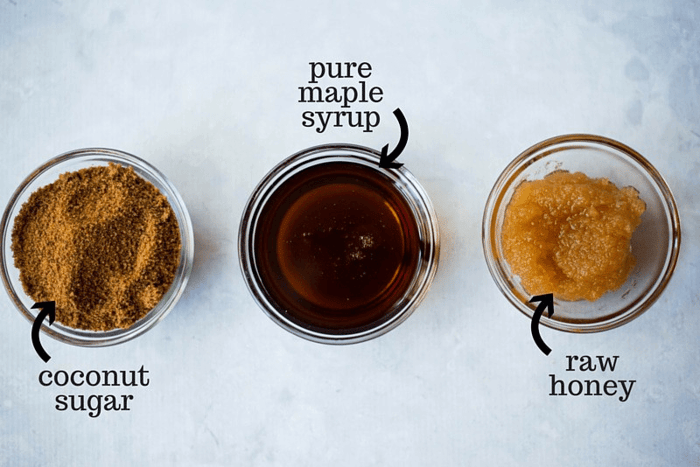
Like I mentioned before, sugar exists in whole foods, like beans, vegetables, and fruits. Sugar provides us with energy and is not a bad thing if consumed in moderation from whole foods and within a well-balanced diet. There are several better alternatives to adding sweeteners to your food. They are the following:
- Coconut Palm Sugar - this sugar is actually sap from the coconut palm which is heated and evaporated which reduces it to granules. Coconut sugar is nutritious and has a low score on the glycemic index (which essentially means it doesn’t tax your body and make you crash after giving you a sugar rush). Coconut sugar tastes similar to brown sugar, but slightly richer.
- Raw Honey - is simply honey that has not been filtered or pasteurized so it includes beeswax, royal jelly, bee pollen and propolis (a substance collected by honeybees from tree buds, used to fill crevices and seal honeycombs.). Raw honey is pretty awesome. Raw honey contains antioxidants, vitamins, minerals, amino acids, and enzymes. Make sure to look for raw in the name, as processed honey has no such health benefits. A honey simply labelled as un-pasteurized is likely filtered, but hasn't been heated. It would not be considered raw because it has been filtered and had the royal jelly, beeswax, bee pollen, and propolis removed.
- Pure Maple Syrup - contains beneficial nutrients, lower Glycemic Index score (so not as harmful to liver), helps with digestion, and contains antioxidants.
While these three better-for-you sugars do contain many more health benefits than processed sugar, I want to stress they are all still…sugar. Therefore, make sure you consume them in moderation.
For more recipe ideas, grocery shopping lists, and daily communication with me, sign up for 30 Day Healthy and get started today!
Step 3: Beware of artificial sweeteners.
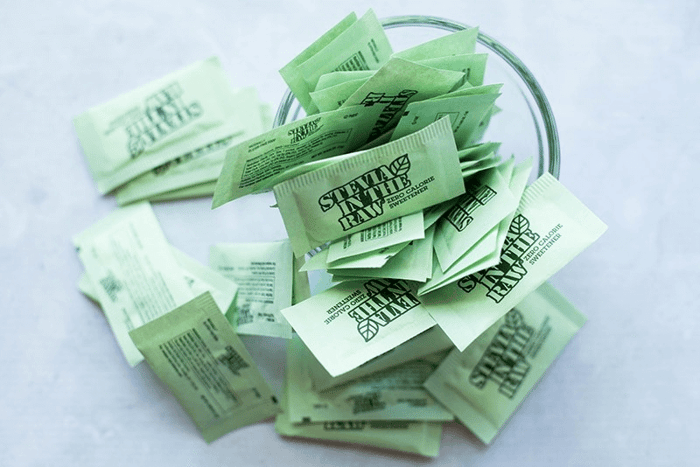
Many people turn to artificial sweeteners when trying to avoid excess sugar in their diets. While many consider these type of zero calorie sweeteners “safe” or “guilt-free,” they’re likely not helping you as much as you'd like. You are still used to highly sweetened food and this is what you need to move away from.
For all you Stevia lovers out there, the same goes for Stevia. Forget the notion that “natural” sweeteners that contain zero calories are actually good for you. Yes, the stevia plant contains green leaves that are naturally very sweet and calorie-free. However, the extracts and powders you can purchase in the grocery store have very little to do with the original plant, and have their own negatives.
Step 4: Identify the main culprit.
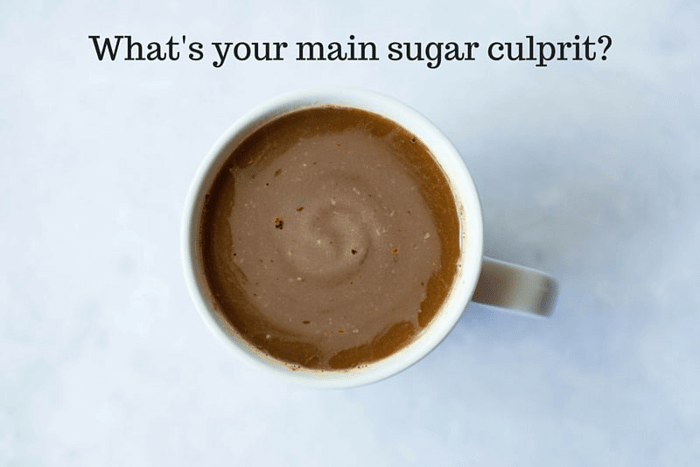
We all have one type of food or drink that is probably the most major of all the culprits of our continued dependency on processed sugar. Maybe you are a sweet coffee drinker. Maybe you love your Dr. Pepper. Maybe you sneak a candy bar every day at 2:30pm to get you through the afternoon at work. It’s likely this one culprit that scares you about letting go of processed sugar and quitting for good. It’s also likely this one culprit that is holding you back from reaching your health-related goals.
Each change you make during this process of quitting processed sugars will help you with the next change. Attacking this main culprit head-on will certainly work to help you remove the need for sweets within the rest of your diet. Start looking at that "treat" as your ball and chain to sugar. Get rid of it and you'll be soooo much better off, and you start to learn How To Eat Healthy - I promise.
Step 5: Start to remove sugar from your home.
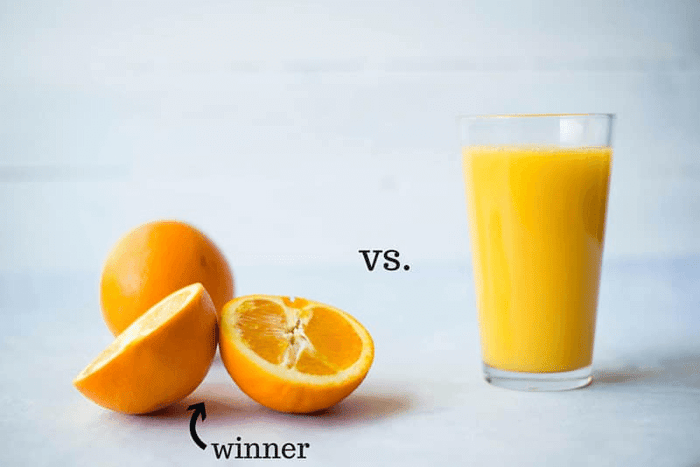
It all needs to go. Otherwise, it will be there for you when you’re feeling week and just want to give up. If you don’t have it, you won’t eat it. Donate, give away, or throw away all processed sugar from your home. That means sugary cereals (and even many of the so-called healthy cereals you think you purchased), candy, cookies, granulated sugar, brown sugar, high fructose corn syrup, etc. You won’t be needing those anymore.
A note on fruit juices. Yes, they are made from fruit. NO, they aren’t as good for you as fruit. Believe it or not, they can actually contain the same amount of sugar as a can of soda. While the sugar is natural sugar, not added sugar, it still is a show to your system and is too much sugar to be combined at one time. Instead, opt for eating a piece of fruit instead of drinking what is essentially 3-4 pieces of fruit very rapidly.
Also (and this goes along with reading your nutrition labels) check your condiments, pasta sauces, fruit juices, barbecue sauces, breads, and so on for lurking sugar. You’ll be surprised with just how much hidden sugars you’ll find. There are so many ways to Eat Healthy and make the foods you love WITHOUT refined sugars and high fructose corn syrup.
Step 6: Make it a transition.
For others, change can be very scary and difficult for us to swallow, especially when we consider the years and years we’ve likely been addicted to refined sugars. Start small, take baby steps, and keep moving towards removing refined sugars from your diet. Each teaspoon of sugar you remove a day, the better off you’ll be.
As much as you may want to throw everything out and quit for good, that is not always the best choice because we have habits and routines and likes that will all be unhappy and thrown out of whack. Instead, make the transition gradual to the point where you don’t even feel like you’re working to remove anything. Then, one day, you’ll not even feel like that extra soda or white mocha latte or cookie. Your body and mind are capable of amazing things - so stop letting sugar control them and take charge!
Step 7: Just start.
One of the most common complaints I hear from men and women trying to get healthy is how they just can’t get past their addiction to sugar, Their sweet tooth is just too strong and is always sabotaging them from reaching their health and weight goals. They’re worried they’ll never be able to eat ice cream again, enjoy chocolate, sip a sweet latte, or have pancakes with syrup again. They focus on all the things they’ll lose and this is terrifying and keeps them from taking that jump into quitting sugar. They don't focus on the basics on how to quit sugar, if you just start, either by cutting out that 2 o'clock snickers or you slowly adjust to not having that Dr. Pepper with dinner. By slowly cutting out each sugary unnecessary item you will slowly get closer to quitting sugar.
FAQs
Is Quitting Sugar Hard?
The actual action of quitting sugar isn't that hard, it's the ability to stick to quitting it and turn down the foods that are tempting that is hard. Being able to stick to it and not give up is very difficult, but with my help I am sure you can do it!
By Quitting Sugar, Can I Never Eat Out Again?
No, by quitting sugar that does not mean you are never allowed to have a snickers or get some sort of takeout. It just means that you need to stick to a consistent pattern of leaving unnecessary sugars out of your daily food. Getting a burger out on a special occasion is not the end of the world, you just have to ensure you get back on track. Allowing days that you can eat foods that are not goo for you, are very essential to staying off unnecessary sugar for the long run.

